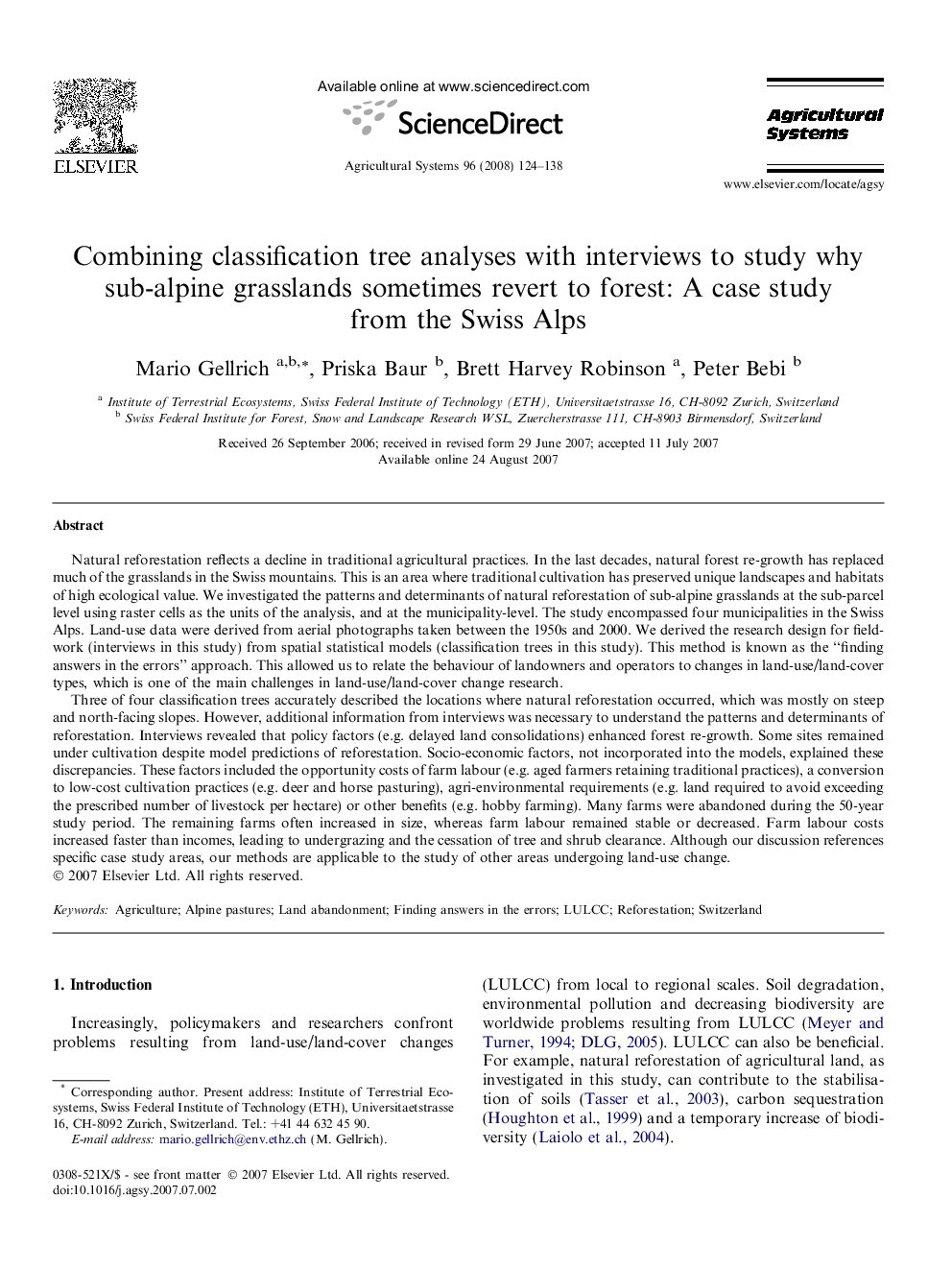| کد مقاله | کد نشریه | سال انتشار | مقاله انگلیسی | نسخه تمام متن |
|---|---|---|---|---|
| 4491872 | 1623269 | 2008 | 15 صفحه PDF | دانلود رایگان |

Natural reforestation reflects a decline in traditional agricultural practices. In the last decades, natural forest re-growth has replaced much of the grasslands in the Swiss mountains. This is an area where traditional cultivation has preserved unique landscapes and habitats of high ecological value. We investigated the patterns and determinants of natural reforestation of sub-alpine grasslands at the sub-parcel level using raster cells as the units of the analysis, and at the municipality-level. The study encompassed four municipalities in the Swiss Alps. Land-use data were derived from aerial photographs taken between the 1950s and 2000. We derived the research design for fieldwork (interviews in this study) from spatial statistical models (classification trees in this study). This method is known as the “finding answers in the errors” approach. This allowed us to relate the behaviour of landowners and operators to changes in land-use/land-cover types, which is one of the main challenges in land-use/land-cover change research.Three of four classification trees accurately described the locations where natural reforestation occurred, which was mostly on steep and north-facing slopes. However, additional information from interviews was necessary to understand the patterns and determinants of reforestation. Interviews revealed that policy factors (e.g. delayed land consolidations) enhanced forest re-growth. Some sites remained under cultivation despite model predictions of reforestation. Socio-economic factors, not incorporated into the models, explained these discrepancies. These factors included the opportunity costs of farm labour (e.g. aged farmers retaining traditional practices), a conversion to low-cost cultivation practices (e.g. deer and horse pasturing), agri-environmental requirements (e.g. land required to avoid exceeding the prescribed number of livestock per hectare) or other benefits (e.g. hobby farming). Many farms were abandoned during the 50-year study period. The remaining farms often increased in size, whereas farm labour remained stable or decreased. Farm labour costs increased faster than incomes, leading to undergrazing and the cessation of tree and shrub clearance. Although our discussion references specific case study areas, our methods are applicable to the study of other areas undergoing land-use change.
Journal: Agricultural Systems - Volume 96, Issues 1–3, March 2008, Pages 124–138